Drat – missed it again
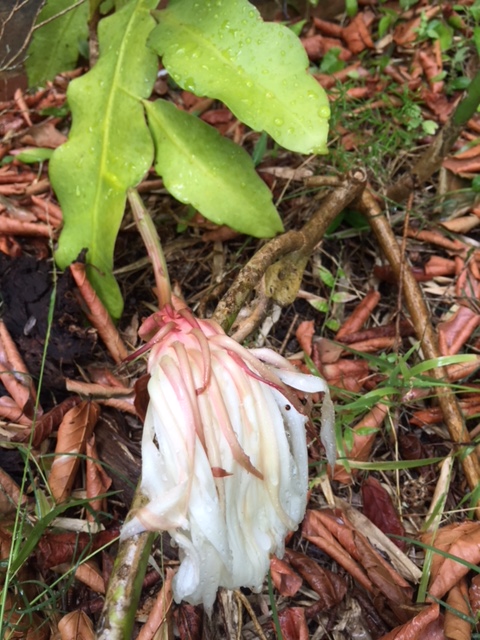
The morning after (night-blooming cereus).
March 2018

The morning after (night-blooming cereus).
March 2018

Gardens have the capacity to turn us gardeners into unrestrained sentimentalists. Take the maidenhair above. It is not just a few pots of maidenhair. To me, it’s the Lois Memorial Garden. My mother-in-law died 30 years ago. I’ve watered that very same maidenhair salvaged from under her kitchen window under my own kitchen window ever since.
Same goes for the garlic patch. It’s my Margaret Memorial Garden, planted with descendants of the very same garlic my friend used to bring me down from her country garden. The jacaranda has a pedigree equally known by heart…and the ivy…and the orchids.
Fortunately this rather mawkish tendency is tempered by a degree of pragmatism. When Aunt Mary’s fern dies, for example, there’s no mourning. Straight into the green bin with it. Similarly, when the real estate agent suggests re-landscaping would add a bit of oomph (and consequently $$$), too bad about the honeysuckle grown from old Bill’s cutting….out it goes in favour of a neat box hedge.
However pragmatism has its limits. Despite the trend these days to de-clutter the house, I don’t know many gardeners who think that time has come for the garden. There’s just too many stories embedded there.
March 2018
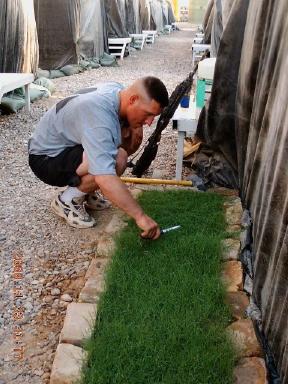
Soldiers have made gardens in the past. In WW1 they grew vegetables near the trenches. In WW2, POWs had extensive vegetable gardens in some camps. But a lawn!!
This soldier’s lawn in Iraq is apparently not unusual. There’s another patch outside a tent on a Middle East air force base. Each new bunch of guys takes it over….watering in 50 degree heat with their water bottles, providing shade with camouflage cloth, mowing it with scissors.
Creating these gardens needs ingenuity. One soldier tells how he collected timber lying around the base and built a frame. He mixed peat moss, kept on base to soak up Hazmat spills, with local soil to lighten it.
The army’s poop is turned into dried solids. He used that for fertilizer. Watering was set up using plastic water bottles and parachute cord. But instead of writing to his wife to send lawn seeds like the soldier above, he bought seeds from a local. They turned out to be ferns.
March 2018
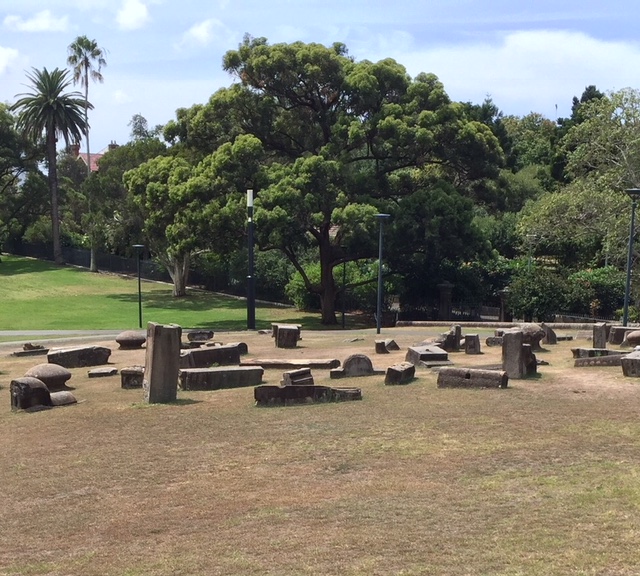
…a rock garden. The Domain. Sydney.
March 2018
Answer to QQ4
(a) flower buds (b) flower stigmas (c) seeds (d) stem (pith of) (e) trick question – squashed insects (f) root/rhizome
B. I keep reading these magazine articles that give good advice to older gardeners.
G. Such as what?
B. Such as: make sure you put up sturdy rails along every garden path.
G. To ruin the aesthetics?
B. No. Silly. To prevent a fall.
G. But if I have to fall, the garden is where I’d like to do it.
B. That’s not the point. They’re thinking of our welfare. Like recommending all garden paths be made flat.
G. But what if you live on a hilly block?
B. You’re just being obstructive. These are well-intentioned people. Another thing they recommend is vertical gardens.
G. You mean when you string up old panty hose against a fence and fill the loops with potting mix?
B. It’s so we don’t have to bend.
G. Next they’ll tell us to go out and buy a bunch of railway sleepers….
B. …to construct raised beds. They do. What’s wrong with that?
G. Nothing hiring a team of labourers and two tonne truck wouldn’t fix. Here. Let me pass you this House and Garden. It’s full of really pretty pictures.
February 2018
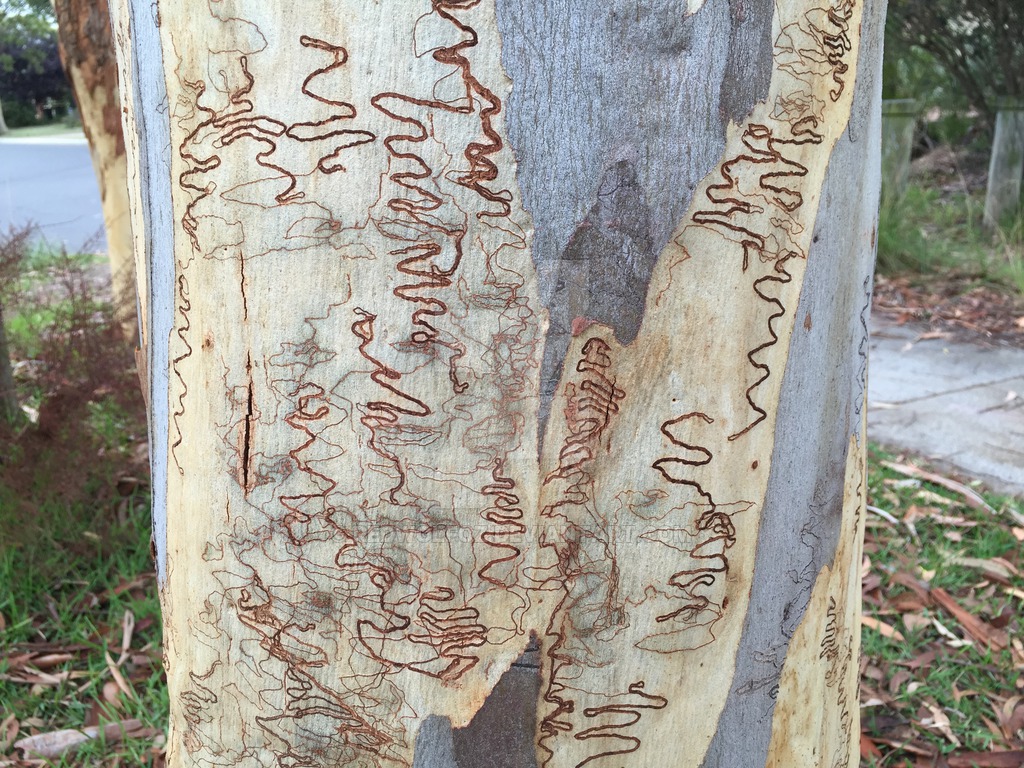
The gum tree has shaped our idea of beauty. We understand its grey green drabness, its loose dishevelled looks. We have learned to love its dappled trunks, its peeling bark, the smell of its leaves in the smoke of our campfires.
I once took an elegant French woman camping (don’t ask) in outback South Australia. We walked in silence through a red-walled sandy gully strewn with awesome twisted eucalypts. Suddenly, she pounced with relief on a tiny blue flower of an invasive weed – wandering jew, I believe. “Oh, so pretty,” she said.
I took a London business colleague for a hike in the Blue Mountains. The valley put on its best show of swirling mists, blue vistas, tall eucalypt forests. Again a silent walk. Then, “Your bush is very untidy isn’t it?” he said.
February 2018
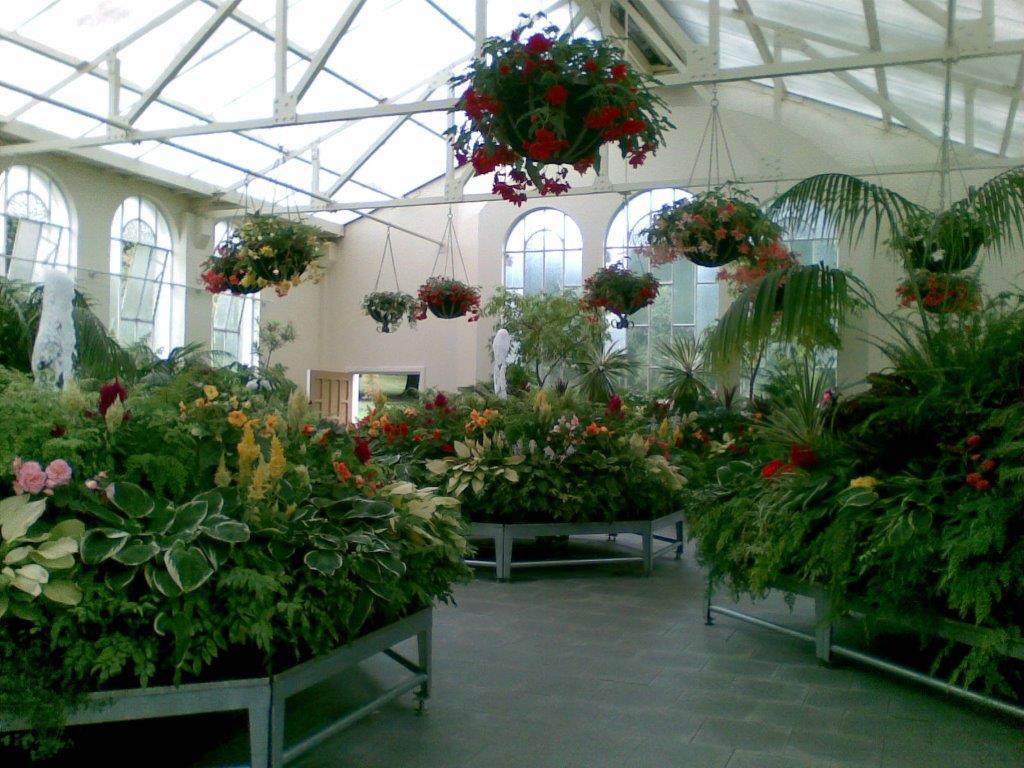
The municipal conservatory (Launceston, Tasmania)
Pity the guy on conservatory duty. He’d be wielding a broom 90% of the time.
February 2018
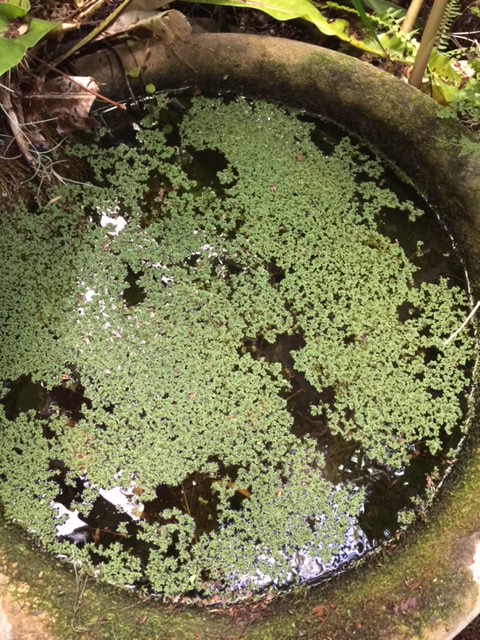
We call him “our frog” but we’ve been calling him that for so many years he’s probably the great great great grandson of our frog. For months at a time, he disappears. Then suddenly, we hear the familiar bonk, bonk, bonk in the night. “He’s back”, we shout.
Where does he go? How does he get back? Our house has a front wall and a closed gate. There are bitumen roads and suburbia all around. Does he come hop hop hopping up the street? Never seen a squashed frog but maybe. Does he vault the wall? How high CAN a frog jump? All is mystery. But we feel so privileged that he calls this tiny pond in our front yard his occasional home.
February 2018
Answer to QQ3:
Prickly Moses wattle (acacia verticillata subsp. ovoidea)
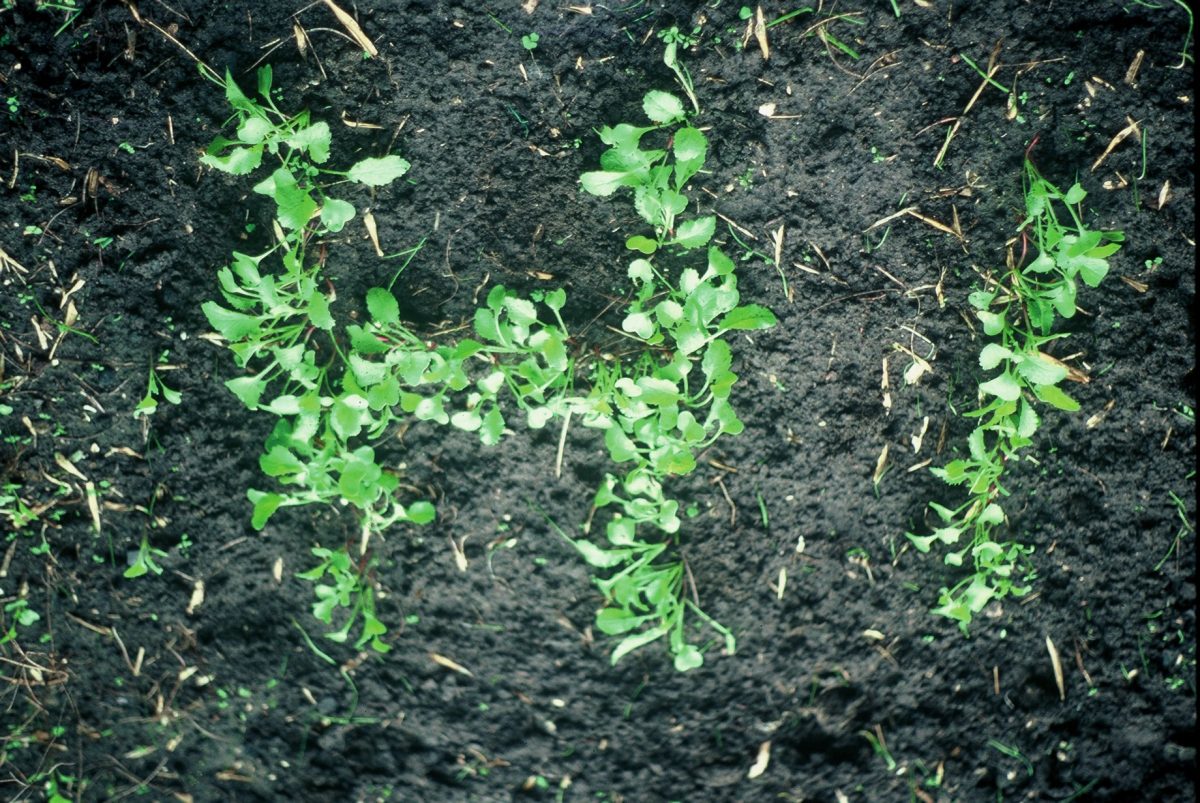
My effort looks a big wonky. You’ll do a lot better.
January 2018
B. Would you believe, I can’t find the little gardening fork again.
G. It’ll turn up. It always does.
B. It’s not so much the fork that bugs me. It’s my failing eyesight.
G. That’s one advantage of being old. Think of all the things you don’t notice now.
B. Like what?
G. The peeling paint on the front fence. That the lawn needs a mow. The galloping fishbone fern.
B. Mmmm. That packet of seeds you bought when you wanted snow peas that was sweet peas when you got home and put on your glasses?
G. Anyone can make the occasional mistake.
B. Next you’ll be telling me it’s good we’re going a bit deaf.
G. Yes, I will. There’s lots of sounds I’m glad I don’t hear now.
B. Like what?
G. That yappy dog up the back. Next door’s gurgling pool vacuum. The kookaburras at 5 a.m.
B. Mmmm. The phone?
G. Well you can’t win ’em all.
January 2018
